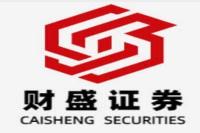ASML Q2 Earnings Beat Expectations, But Full-Year Outlook Remains Flat: A Deep Dive into the Semiconductor Market Giant's Performance
Meta Description: ASML, the leading lithography equipment provider, reported Q2 earnings that exceeded expectations, with strong revenue growth fueled by an increase in immersion system sales. However, the company maintained a flat full-year outlook, citing continued investments in capacity and technology for future demand.
Introduction:
In the ever-evolving landscape of the semiconductor industry, ASML, the Dutch-based technology giant, stands as a key player, wielding immense influence over the global chipmaking landscape. ASML's leading-edge lithography equipment, particularly its advanced extreme ultraviolet (EUV) machines, are indispensable for manufacturers seeking to produce the most sophisticated chips with ever-shrinking dimensions. Its recent Q2 earnings report revealed a mixed bag of results, with strong quarter-on-quarter growth but a cautious full-year outlook. This article delves deep into the details of ASML's performance, examining the key drivers behind its strong Q2 results while analyzing the factors contributing to its flat full-year forecast. We'll also explore the broader implications of ASML's performance for the semiconductor industry, particularly for the memory and logic chip markets.
ASML Q2 Earnings: A Glimpse into a Recovering Semiconductor Market
ASML, the world's leading supplier of lithography equipment, delivered a solid Q2 2024 performance, exceeding analysts' expectations. The company reported net sales of €62.43 billion, a significant increase compared to the €52.9 billion generated in Q1. This robust growth was primarily driven by a surge in sales of immersion systems, reflecting a gradual recovery in the semiconductor market. The company's gross margin also exceeded expectations, reaching 51.5%, a testament to its strong pricing power and efficient operations.
Key Highlights of ASML's Q2 performance:
- Net sales: €62.43 billion, significantly higher than the €52.9 billion in Q1.
- Gross margin: 51.5%, exceeding expectations.
- Net profit: €15.78 billion, demonstrating continued profitability.
- New orders: €56 billion, including €25 billion for EUV lithography machines.
- Backlog: €390 billion, indicating a robust pipeline of future demand.
Dissecting ASML's Q2 Growth: Immersion Systems Drive Revenue Surge
ASML's Q2 performance was characterized by a strong demand for immersion systems, a key component of its lithography equipment portfolio. These systems utilize specialized optics and immersion fluids to enhance resolution, enabling the production of smaller and more complex chips. The rise in immersion system sales reflects a positive shift in the semiconductor market, indicating a growing need for advanced chip manufacturing capabilities.
Understanding the Factors behind the Demand for Immersion Systems:
- Increased demand for advanced chips: The growing adoption of smartphones, AI applications, and high-performance computing systems is driving the demand for more powerful and energy-efficient chips, necessitating the use of immersion systems for precise fabrication.
- Recovery in the memory market: The memory market, which had been facing a downturn in recent years, is showing signs of recovery, boosting the demand for advanced lithography equipment, including immersion systems.
- Competition among leading chipmakers: The intense competition among global chipmakers like Intel, Samsung, and TSMC is pushing them to invest heavily in advanced manufacturing capabilities, leading to an increase in demand for immersion systems.
ASML's Performance: A Positive Sign for the Semiconductor Industry
ASML's Q2 results offer a glimmer of hope for the semiconductor industry, suggesting a gradual recovery from the recent downturn. The strong demand for its immersion systems reflects a growing need for advanced chip manufacturing capabilities, a trend expected to continue in the coming years. This is particularly positive for the memory and logic chip markets, which rely heavily on ASML's lithography equipment.
Memory and Logic Chip Markets: ASML's Role in Shaping the Future
ASML's technology plays a pivotal role in driving innovation in both the memory and logic chip markets. Its EUV lithography machines enable the production of advanced DRAM and NAND memory chips, crucial for data storage and processing. In the logic chip market, ASML's equipment enables the fabrication of CPUs, GPUs, and other processing units, powering everything from smartphones to high-performance computing systems.
Understanding the Impact of ASML's Technology on the Memory Market:
- Enabling advanced DRAM and NAND technologies: ASML's EUV lithography machines are crucial for producing advanced DRAM and NAND memory chips, allowing for higher storage densities and faster speeds. This is essential for meeting the growing demand for data storage and processing capabilities.
- Driving innovation in memory chip development: ASML's technology is constantly evolving, enabling the production of smaller and more complex memory chips. This is leading to the development of new memory technologies, such as 3D NAND and high-bandwidth memory (HBM), which offer significant performance improvements.
ASML's Influence on the Logic Chip Market:
- Facilitating the production of advanced processors: ASML's EUV lithography machines are crucial for fabricating the most advanced CPUs and GPUs, enabling the production of powerful and energy-efficient processors for smartphones, laptops, and data centers.
- Enabling the development of new logic chip architectures: ASML's technology is driving innovation in logic chip architecture, enabling the development of new designs that offer higher performance and improved energy efficiency.
ASML's Q3 Outlook: A Cautious Approach to Full-Year Performance
Despite the strong Q2 results, ASML maintained a flat full-year outlook, projecting revenue in the range of €67-73 billion for Q3, lower than analysts' expectations of €74.6 billion. This cautious approach reflects the company's ongoing investments in capacity and technology development, along with the persistent uncertainties in the global economic environment.
Factors Contributing to ASML's Cautious Full-Year Outlook:
- Continued investments in capacity and technology: ASML is investing heavily in expanding its production capacity and developing new technologies, such as High NA EUV lithography, which will require significant resources and time.
- Global economic uncertainties: The ongoing geopolitical tensions and economic slowdown are creating uncertainties in the semiconductor market, making it difficult to predict future demand with certainty.
- Customer inventory adjustments: ASML's customers are still adjusting their inventory levels after the recent downturn in the semiconductor market, which may temper demand for new equipment in the short term.
ASML's Long-Term Vision: Shaping the Future of Chipmaking
Despite the cautious full-year outlook, ASML remains optimistic about the long-term prospects for the semiconductor industry. The company is focused on driving innovation in chipmaking technology, investing heavily in research and development to develop next-generation lithography systems. This commitment to innovation underscores ASML's crucial role in shaping the future of the semiconductor industry, enabling the production of more powerful and efficient chips that will power the next generation of technologies.
Key Areas of ASML's Long-Term R&D Focus:
- High NA EUV lithography: ASML is developing High NA EUV lithography systems, which offer even higher resolution and enable the production of smaller and more complex chips. This technology is essential for pushing the boundaries of chipmaking capabilities.
- Next-generation immersion systems: ASML is constantly refining its immersion system technology, developing new techniques and fluids to enhance resolution and enable the production of more advanced chips.
- Alternative lithography technologies: ASML is exploring alternative lithography technologies, such as extreme ultraviolet (EUV) and directed self-assembly (DSA), to address the future challenges of chipmaking.
ASML's Role in Securing the Future of the Semiconductor Industry
ASML's commitment to innovation and technological leadership is crucial for securing the future of the semiconductor industry. The company's advanced lithography equipment is indispensable for producing the most sophisticated chips, which are vital for powering everything from smartphones to high-performance computing systems. By continuing to invest in research and development, ASML is ensuring that the semiconductor industry has the tools it needs to meet the ever-growing demand for advanced chips.
FAQs (Frequently Asked Questions):
Q1: What is ASML's core business?
A1: ASML is the world's leading supplier of lithography equipment, which is used to manufacture semiconductor chips. Its core business is the design, development, and manufacture of these machines, primarily for the production of advanced memory and logic chips.
Q2: What is the significance of ASML's EUV lithography machines?
A2: ASML's EUV lithography machines are crucial for producing the most advanced chips, enabling the production of smaller and more complex chips with ever-shrinking dimensions. These machines are essential for pushing the boundaries of chipmaking capabilities and are considered a key technology for the future of the semiconductor industry.
Q3: What is High NA EUV lithography?
A3: High NA EUV lithography is a next-generation lithography technology being developed by ASML. It offers even higher resolution than current EUV systems, enabling the production of even smaller and more complex chips. High NA EUV is expected to be a key technology for future generations of chips and will play a crucial role in driving innovation in the semiconductor industry.
Q4: How does ASML's technology impact the memory and logic chip markets?
A4: ASML's technology is essential for both the memory and logic chip markets. Its EUV lithography machines are used to produce advanced DRAM and NAND memory chips, enabling higher storage densities and faster speeds. In the logic chip market, ASML's equipment enables the fabrication of CPUs, GPUs, and other processing units, powering everything from smartphones to high-performance computing systems.
Q5: What are the key challenges facing ASML in the future?
A5: ASML faces several challenges in the future, including maintaining its technological leadership in a rapidly evolving industry, managing its complex supply chain, and navigating geopolitical uncertainties. The company also faces pressure to increase production capacity to meet the growing demand for its equipment.
Q6: What are the implications of ASML's performance for the semiconductor industry?
A6: ASML's performance is a key indicator of the health of the semiconductor industry. The company's strong Q2 results suggest a gradual recovery in the market, driven by increasing demand for advanced chips. ASML's cautious full-year outlook reflects the ongoing uncertainties in the global economic environment and the company's focus on long-term investments in capacity and technology.
Conclusion:
ASML's Q2 earnings report provides a mixed picture of the semiconductor industry's performance. While the strong quarter-on-quarter growth reflects a gradual recovery, the cautious full-year outlook underscores the persistent uncertainties in the global economic environment. However, ASML's commitment to innovation and technological leadership remains unwavering, positioning the company as a key player in shaping the future of the semiconductor industry. As the demand for advanced chips continues to grow, ASML's role in enabling the production of these critical components will become even more significant, solidifying its status as a global leader in the technology landscape.



